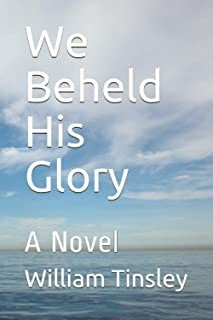The U.S. Surgeon General predicted that this would be the
hardest and saddest week we have faced since COVID-19 reached our shores. At the beginning of this week the death toll
surpassed 10,000 and continued to climb. Every death has a story, a life with family
and friends suddenly snuffed out in a matter of days. In Florida a couple who had been married 51
years and were in good health contracted COVID-19. Within 3 weeks the husband
and wife died within 6 minutes of each other.
In Colorado a 41 year old Sheriff’s deputy picked up the virus. He died of COVID-19 on April 1.
In New York funeral homes were struggling to process the
bodies. Morgues, cemeteries and chapels
are closed. Loved ones were being
cremated and buried without funerals.
Families are left to mourn alone without the comforting presence of
clergy and friends.
In 1997 I attended a conference in Boston and stayed at the
historic Omni Parker House Hotel. With a
bit of free time on my hands, I ventured outside, crossed Tremont Street and
wandered into the Granary Burial Grounds, the third oldest cemetery in Boston
established in 1660. Some of America’s
founding fathers are buried here: Paul Revere, Samuel Adams, John Hancock and
five victims of the Boston massacre along with Benjamin Franklin’s parents.
As I wandered among the grave markers I was struck by the
contrast. Those gravestones that were
erected in the late 1600s bore images of skulls and cross bones. They appeared stark
and painful. But in the early 1700s
something changed. The images were replaced with angels and cherubim along with
Scripture quotations. They radiated hope and expectations for heaven.
I wondered what happened to cause the change. Why were those buried in the late 1600s
interred beneath morbid markers while those who died in the 1730s and later had
gravestones symbolizing hope of heaven?
The only explanation seemed to be the Great Awakening.
The earliest beginnings of the Great Awakening can be traced
to Gilbert Tennent who founded a “Log College” In Pennsylvania in 1727 to train
Presbyterian preachers. The “Log College”
was later named “Princeton.” But it took
wings in the 1730s on the preaching of John and Charles Wesley, the founders of
Methodism, and George Whitefield, whose sermons were widely published by his
friend, Benjamin Franklin. The Great Awakening changed the spiritual fabric of
the Colonies and transformed the way people viewed death. Death released its grim grip of despair and
was replace by the hope of heaven through faith in Jesus Christ.
It is more than interesting, perhaps providential, that our
generation is engaged in its greatest struggle with death at the precise moment
when the world remembers the resurrection!
But this Easter will be different.
Churches will be empty. Perhaps our vacant churches will serve as a
powerful reminder of another empty room where the body of Jesus was entombed
2,000 years ago. “But now Christ has
been raised from the dead, the first fruits of those who are asleep. … O death
where is our victory? O death where is
your sting? The sting of death is sin, and
the power of sin is the law. But thanks be to God who gives us the victory
through our Lord Jesus Christ” (1 Corinthians 15:20, 55-57). The churches may be empty but the message
prevails and Jesus’ resurrection will be proclaimed this Easter more widely
than ever.





While most every cathedral and large ornate buildings will be empty as tombs, Houses of worship will be filled. Wherever 2 or 3 are gathered together, He is with us. We will pray, we will sing, and we will "break Bread" together. Sunday is coming, He is risen, worship will be given, and we rejoice...Blessed be the One who was slain and is risen!
ReplyDelete